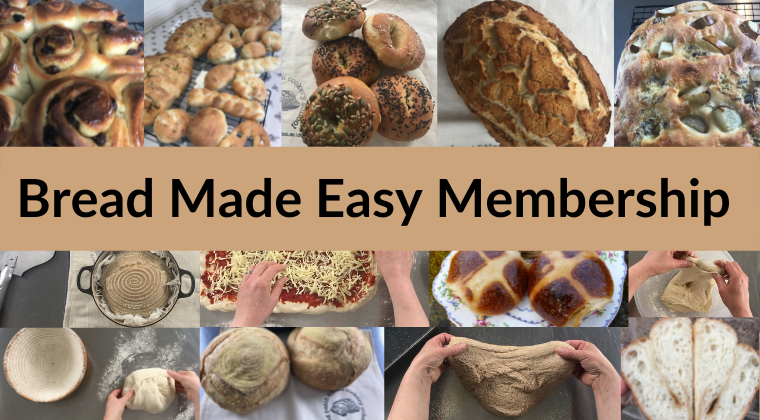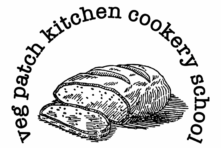Gluten is only present in wheat flour once you add water. The proteins gliadin and glutenin can start to form chains as soon as the dough is hydrated and these protein chains form the gluten network.
The gluten network adds strength to the dough. It allows the dough to expand when the yeast expels carbon dioxide and capture that gas in bubbles. These bubbles then form the crumb of the bread giving it rise and a lightness to its texture.
In the video below I show you what gluten looks like after I have washed away the starches to help you understand how gluten works in bread dough. I compare plain flour, strong flour and very strong flour to show you the difference between them in terms of dough strength as a result of higher protein/ gluten.
Gluten explained
Gluten is made by the proteins gliadin and glutenin forming long chains that stick to each other. These proteins can’t dissolve in water, instead they form chains with water molecules and each other. Gluten will develop in dough all by itself – as soon as you add water to flour gluten starts to form. Kneading or stretching or manipulating the dough strengthens the gluten network by stretching out the longer molecules of the glutenin protein, whilst the shorter gliadin molecules make links across these strands*. You can feel the dough strengthening and becoming more elastic as you perform gentle stretch and folds. For bread the baker wants to develop the gluten strength in the dough to hold the gas and create a loaf filled with air and springy to the touch. A flour with a higher protein amount is favoured for bread making. For softer, more tender bakes such as cakes and pastry then developing the gluten should be avoided. A wheat with a lower protein is required for cakes and pastry and the baker is careful not to overwork the mixture. Fat is also often added as this coats the gluten strands and prevents them from fully developing. The same applies in bread making – a bread with fat added (oil, butter, milk or eggs) will have a softer, tender crumb.

References: Alan Davidson, The Oxford Companion to Food; Harold McGee On Food & Cooking
Ready to learn more?
This is just one of the things you can learn when you join my Bread Made Easy Membership.



